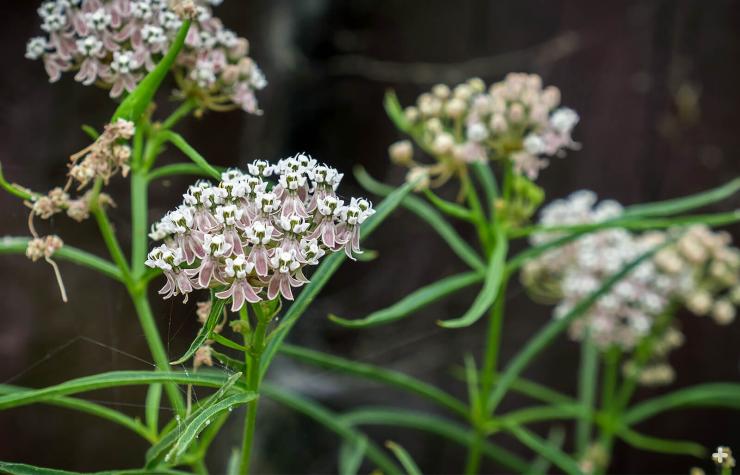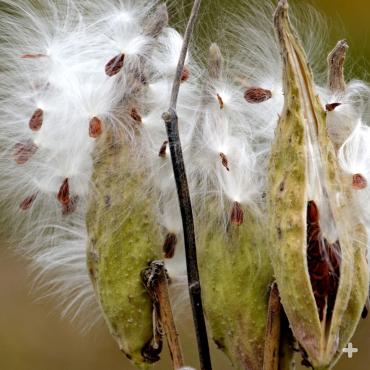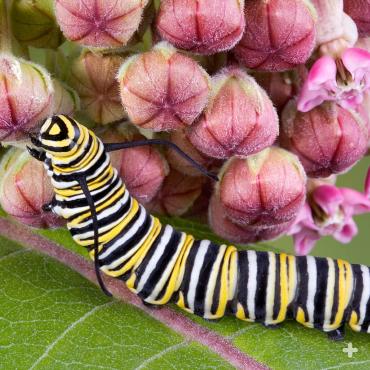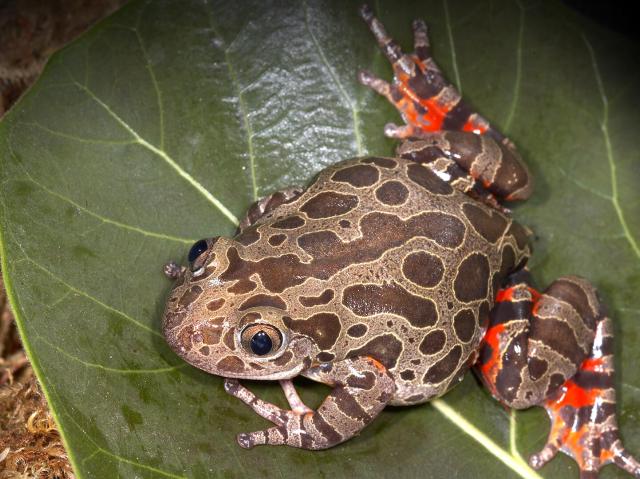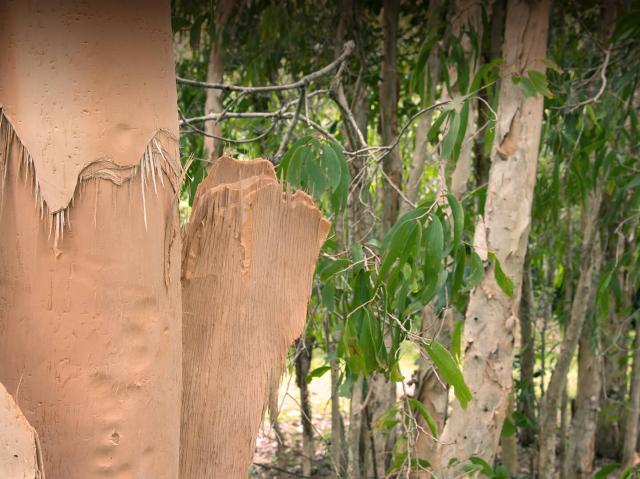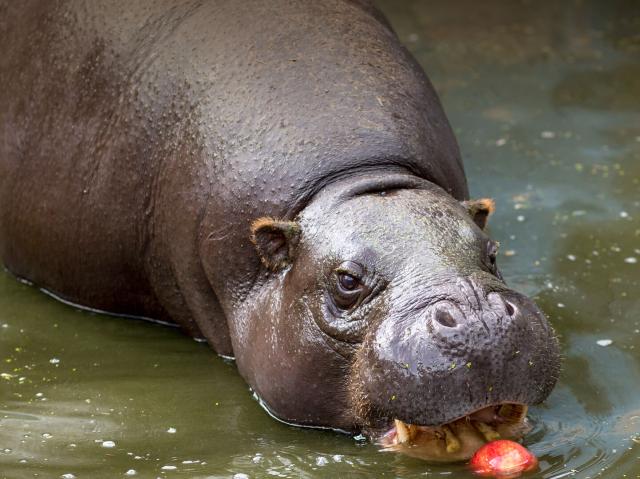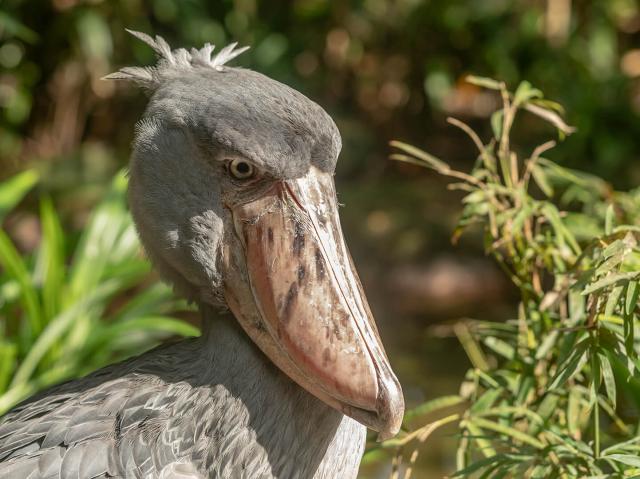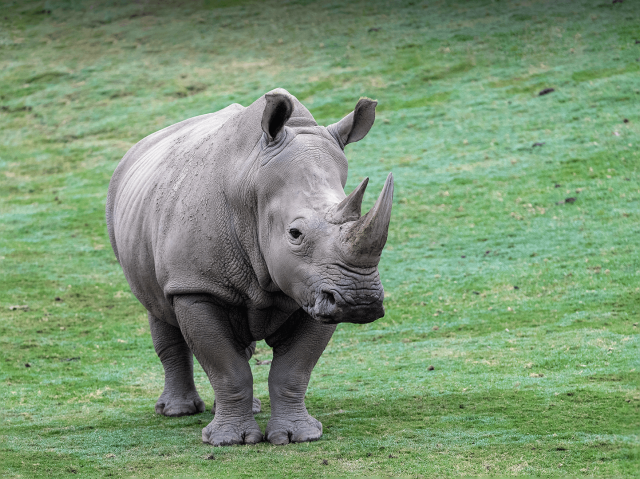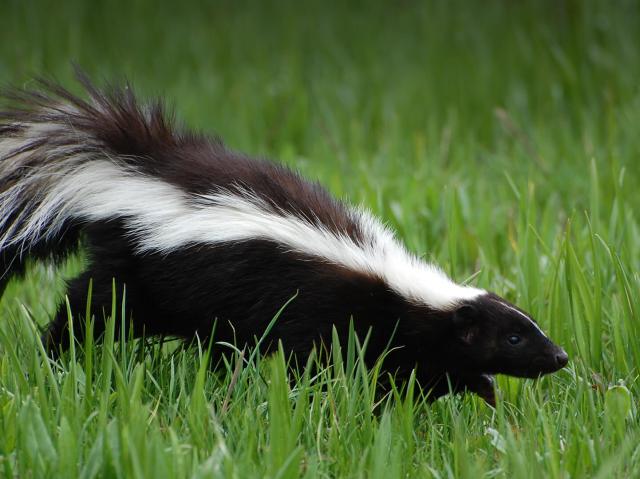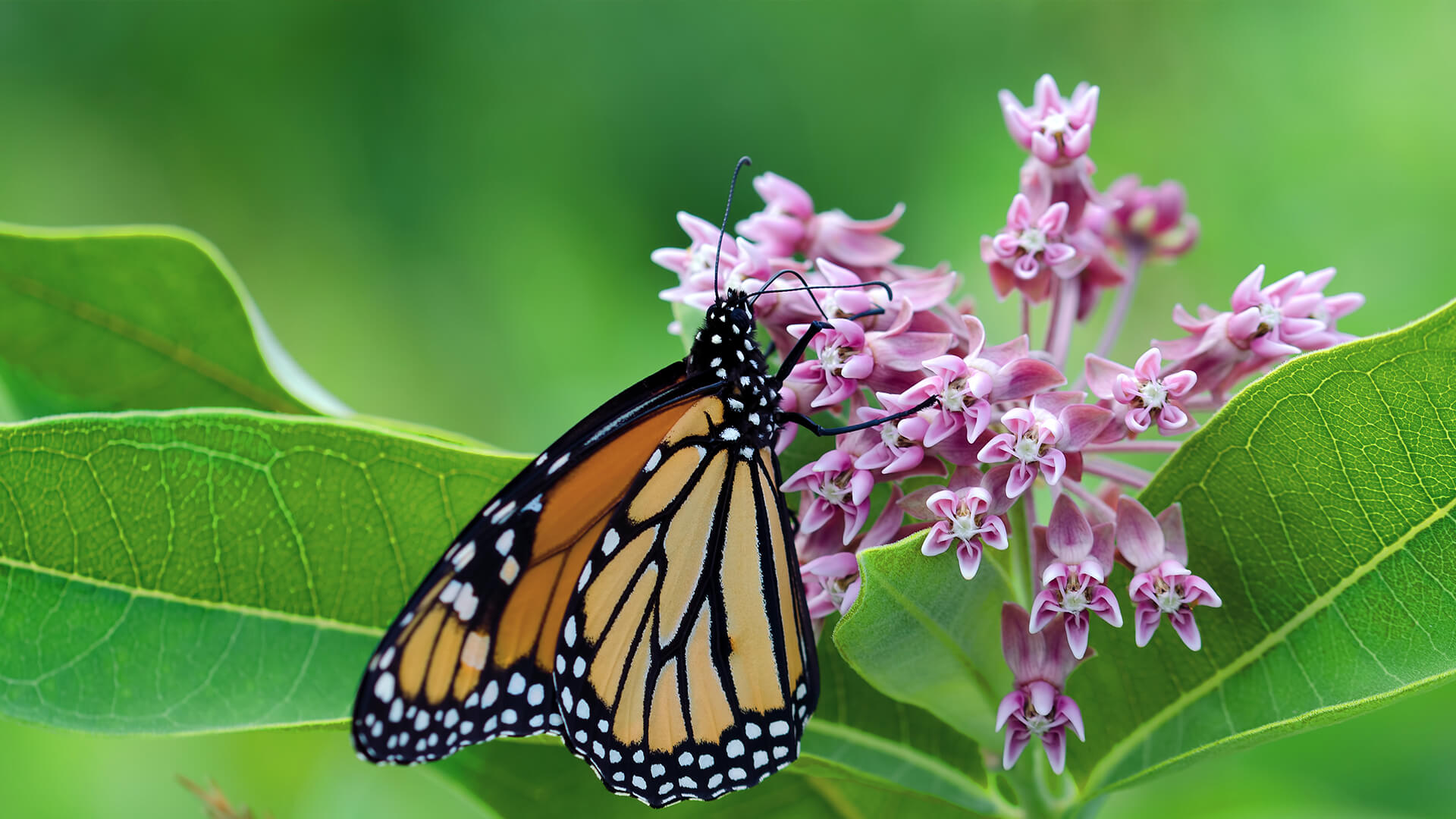
Milkweed

- DIVISION: Tracheophyta
- CLASS: Magnoliopsida
- ORDER: Gentianales
- FAMILY: Apocynaceae
- GENUS: Asclepias
- SPECIES: about 200

OVERVIEW
Across North and South America and sub-Saharan Africa, various species of milkweed inhabit a diversity of habitats, including deserts, plains, woods, canyons, marshes, and meadows. The genus includes about 200 species, and about 100 of those are native to North America. The 48 contiguous states all have native milkweed species, with the highest diversity in Texas—home to 37 species. Some milkweed species have been introduced to other parts of the world, too.
Milkweeds offer up their rich nectar to butterflies, bees, hummingbirds, beetles, wasps, flies, and beetles. Attracting these nectar lovers benefits the habitat, as many of them are also predators of pests like aphids, slugs, whiteflies, and mealybugs.
The milky sap that oozes from broken or damaged leaves and stems is what gives milkweed its name. As protection from herbivores, the latex sap contains bitter-tasting alkaloids and toxins called cardenolides, which affect heart function. Fortunately, most grazers like sheep and goats don’t like the bitter taste of milkweed, and they usually avoid eating it. The sap can also cause skin irritation in some people.
Remarkably, larvae of the monarch butterfly Danaus plexippus thrive on a diet of milkweed leaves. In fact, milkweeds are required host plants for monarchs. The butterflies lay their eggs on the milkweed, and their larvae (caterpillars) munch on the plants as they grow. The caterpillars store milkweed’s toxic compounds in their tissues—something that comes in handy, as birds and other predators don’t like the taste any more than herbivores do. Even after the caterpillars metamorphose into butterflies, they retain some of these foul-tasting compounds, and the protection that comes with them.
CHARACTERISTICS
Most milkweed species are deciduous, perennial herbs; they die back to the ground after flowering and reemerge in spring from established root systems. Depending on the species, stems may be erect, sprawling, or drooping; and they can be simple or branched. Some species—like common milkweed A. syriaca—grow to 6 feet (1.8 meters) or more, while other species—like pallid milkweed A. cryptoceras—are low growing. Leaves grow opposite each other, and their shape varies greatly, from the long, linear leaves of narrow-leaf milkweed A. fascicularis to the heart-shaped leaves of the aptly named heart-leaf milkweed A. cordifolia.
Milkweeds depend on insects for pollination, and they pay them well for it—in nectar! Flowering in late spring and summer, milkweed blossoms grow in clusters called umbels. Depending on the species, flower color ranges from white or cream to green, orange, yellow, pink, or purple. Whatever the color, the nectar is bountiful, and it attracts bees, wasps, butterflies, moths, beetles, and other insects that come to feast at the flower.
A milkweed flower has both male and female parts. The male parts produce grains of pollen, packaged in paired sacs called pollinia. Each pollinium holds a hundred or more grains of pollen. These pairs of pollinia are hidden away inside five vertical slits in the center of a milkweed flower. As an insect perches to sip milkweed nectar, its legs stand just about where these slits are, and they tend to slip inside the slits and get entangled in the threads that connect a pair of pollinia. When the insect removes its leg, it pulls out a snagged pair of pollinia, too.
The ultimate destination for pollen grains isn’t on an insect’s leg, but inside another flower. When the insect pauses to for a drink of nectar at a different plant, the pollinia slip off inside the same kind of vertical slit. A pollinated flower produces a fleshy, pod-like fruit. When the fruit matures and dries, it splits open, releasing hundreds of flat, oval seeds. Each seed is equipped with silky, fluffy hairs (sometimes called floss) that catch the wind and help the seed disperse.
USES
Milkweed made a significant contribution to the war effort during World War II, by replacing kapok, the plant material traditionally used to stuff flotation devices. Kapok is a fleecy fiber that comes from pods of the kapok tree Ceiba pentandra, but supplies were cut off when Japan invaded China. Researchers found that milkweed floss offered a similar water-repellent buoyancy, and the federal government funded a processing plant in Petoskey, Michigan. Enough floss for one life jacket took about 20 pounds of ripe milkweed pods. Milkweed floss use faded after the war, when kapok supply resumed. Today, synthetic fibers have mostly replaced kapok, too. The use of milkweed floss hasn’t completely died, though. Some manufacturers use it as a hypoallergenic, down-alternative filling for pillows and comforters.
CONSERVATION
The U.S. Fish and Wildlife Service lists as threatened two milkweed species native to the US. Mead's milkweed A. meadii is native to tallgrass prairies of the Midwest, but farming and development have destroyed some of its habitat. Recovery strategies include habitat management, reintroduction, conservation research, and public education. Welsh's milkweed A. welshii is native to dunes of Utah and Arizona. The primary threat to this species is habitat loss associated with off-road vehicle use. A recovery plan involves federal, state, tribal, and private partners.
Monarch butterflies migrate from across most of the US into Mexico every year. A smaller population migrates to the California coast. According to the Xerces Society for Invertebrate Conservation, the Mexico-wintering population has declined by more than 80 percent since the 1990s, and the decline of the California-wintering population is even more dire: 99.9 percent. Where once an estimated 4.5 million butterflies migrated to California in the 1980s, fewer than 2,000 were counted in the 2020 survey. A key to the survival of this species is a healthy supply of native milkweed—host plants for eggs and larvae.
Not all milkweed is the same. In critical monarch habitat, nurseries are selling mostly non-native, tropical milkweed species, which poses problems, because in the southern US, these species don’t die back in winter like our native species do. That might sound like a good thing, but it has proven perilous for monarchs. For one thing, tropical milkweed discourages monarchs from migrating, something that's critical to the natural cycle of these butterflies. It also increases the transmission of a protozoan parasite that causes problems ranging from shorter lifespan to problems with flight, and even failure to emerge from the pupa stage. That's why experts urge the use of native milkweed species. Project Milkweed is a collaboration with the Xerces Society, the native seed industry, and the USDA Natural Resources Conservation Service to increase commercial availability of regionally native milkweed seed. If you want to help endangered monarch butterflies, do an internet search to determine which milkweed species is native to your area—and plant it!
By supporting San Diego Zoo Wildlife Alliance, you are our ally in saving and protecting wildlife worldwide.
GO NATIVE
When you plant, choose milkweed that’s native to your area. Do an online search for “milkweed finder,” or talk to someone at your local native plant nursery or native plant society. Let your garden store know that you want to buy native (not tropical) milkweed. Demand drives supply!
Unfortunately, nonnative, tropical milkweed has been the most available milkweed in nurseries and garden centers, but it can discourage endangered monarch butterflies from migrating. In the winter, monarch caterpillars that hatch on topical milkweed are prone to starvation. Plus, tropical milkweed is associated with the spread of a parasite that harms monarch populations. Infected monarchs may not live as long, may not be able to fly well, or may fail to emerge from the pupal stage.
NAMESAKE
The genus Asclepias was named for Asklēpiós, the Greek god of healing.
THAT’S DEEP
Common milkweed A. syriaca grows a 12-foot (3.7-meter) taproot. A one-year-old plant may already have a 6-foot (1.8-meter) taproot.
SURPRISE
Some milkweeds reproduce by sending up shoots several feet away from the parent plant.
NEARLY CLEAR
Unlike other milkweeds, the sap of butterfly milkweed A. tuberosa has watery sap.
BEWARE
Two tropical non-native milkweeds that have been widely introduced in the U.S. are African milkweed A. fruticosa and bloodflower A. curassavica. Avoid planting these species when you can, and opt for species native to your region.
NOT JUST FOR ROYALTY
Milkweed attracts other butterflies, too, including swallowtails, painted ladies, American ladies, red admirals, fritillaries, and hairstreaks.


